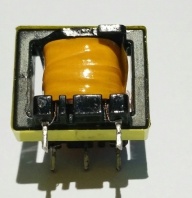NEWS
Understanding High Frequency Transformers: A Key Component in Modern Electrical Systems
Release time:
Apr 04,2025
High frequency transformers are specialized electrical devices designed to transform voltage levels while operating at elevated frequencies, typically above 20 kHz. Unlike traditional transformers, which work effectively at lower frequencies (50/60 Hz), high frequency transformers are essential in applications where size, weight, and efficiency are critical. They are widely used in various sectors, including telecommunications, power electronics, and renewable energy systems.
One of the key advantages of high frequency transformers is their compact size. Operating at higher frequencies allows for the use of smaller cores and windings, which significantly reduces the overall dimensions and weight of the transformer. This makes them particularly suitable for portable and space-constrained applications, such as in mobile devices or compact power supplies.
High frequency transformers also exhibit improved efficiency. At elevated frequencies, the magnetic flux changes more rapidly, enabling quicker energy transfer. This leads to lower energy losses due to heat generation, thereby enhancing the overall efficiency of the power conversion process. Consequently, they are often favored in designs that prioritize energy efficiency and thermal management.
The construction of high frequency transformers differs from that of their low-frequency counterparts. They commonly utilize ferrite cores, which have better magnetic properties at high frequencies. Ferrite materials help to minimize core losses, which are prevalent in traditional iron cores at higher frequencies. The winding techniques used also differ; for example, multi-layer or planar windings are often employed to reduce parasitic capacitance and inductance, further optimizing performance.
Applications of high frequency transformers are vast and varied. They play a crucial role in switch-mode power supplies (SMPS), which are ubiquitous in consumer electronics, computer systems, and industrial equipment. Additionally, these transformers are integral in isolated DC-DC converters used in photovoltaic systems, ensuring efficient power transfer from solar panels to the grid or battery storage.
Moreover, high frequency transformers are essential in the realm of radio frequency (RF) applications, where they aid in signal transmission and reception. In telecommunications, for instance, they help in impedance matching and signal integrity, enabling reliable communication over vast distances.
In conclusion, high frequency transformers represent a pivotal advancement in transformer technology, addressing the demands of modern electrical systems. Their compact size, enhanced efficiency, and versatile applications make them indispensable in various industries. Understanding their functionality and benefits can empower engineers and designers to make informed decisions in their projects, driving innovation in electrical engineering.
One of the key advantages of high frequency transformers is their compact size. Operating at higher frequencies allows for the use of smaller cores and windings, which significantly reduces the overall dimensions and weight of the transformer. This makes them particularly suitable for portable and space-constrained applications, such as in mobile devices or compact power supplies.
High frequency transformers also exhibit improved efficiency. At elevated frequencies, the magnetic flux changes more rapidly, enabling quicker energy transfer. This leads to lower energy losses due to heat generation, thereby enhancing the overall efficiency of the power conversion process. Consequently, they are often favored in designs that prioritize energy efficiency and thermal management.
The construction of high frequency transformers differs from that of their low-frequency counterparts. They commonly utilize ferrite cores, which have better magnetic properties at high frequencies. Ferrite materials help to minimize core losses, which are prevalent in traditional iron cores at higher frequencies. The winding techniques used also differ; for example, multi-layer or planar windings are often employed to reduce parasitic capacitance and inductance, further optimizing performance.
Applications of high frequency transformers are vast and varied. They play a crucial role in switch-mode power supplies (SMPS), which are ubiquitous in consumer electronics, computer systems, and industrial equipment. Additionally, these transformers are integral in isolated DC-DC converters used in photovoltaic systems, ensuring efficient power transfer from solar panels to the grid or battery storage.
Moreover, high frequency transformers are essential in the realm of radio frequency (RF) applications, where they aid in signal transmission and reception. In telecommunications, for instance, they help in impedance matching and signal integrity, enabling reliable communication over vast distances.
In conclusion, high frequency transformers represent a pivotal advancement in transformer technology, addressing the demands of modern electrical systems. Their compact size, enhanced efficiency, and versatile applications make them indispensable in various industries. Understanding their functionality and benefits can empower engineers and designers to make informed decisions in their projects, driving innovation in electrical engineering.
Previous


















